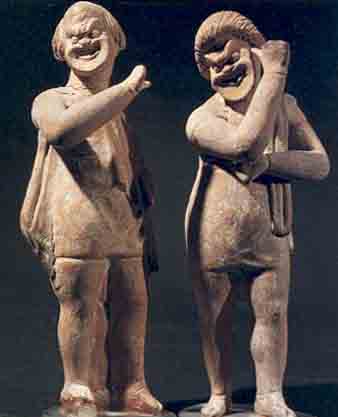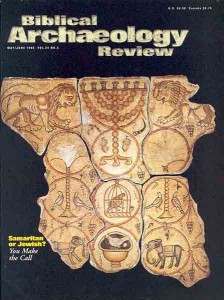
Long after Rome conquered the Mediterranean world, Greek theatrical forms survived, including the comic types personified by these first-century B.C. terra-cotta figurines.
Greek comedy developed early and was always as popular as tragedy. Because plays were so often performed before thousands in huge open spaces, producers came up with some special features to get their points across. Masks helped audiences immediately identify the characters. They often had funnel-shaped mouths to help the actors project their voices, like the masks on these figurines. The actors also often wore thick-soled boots to appear larger than life, like the ones worn by the figurine on the left. These figurines’ short mantles, worn over long-sleeved tunics and leggings, were characteristic of comedians, as were padding to accentuate pot bellies and buttocks, and long phalluses. By the time these 7-inch-tall figurines were cast, however, such exaggerated features were going out of style.
Already a library member? Log in here.
Institution user? Log in with your IP address.

